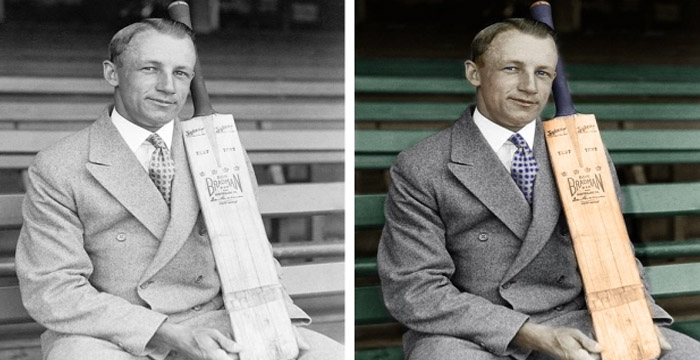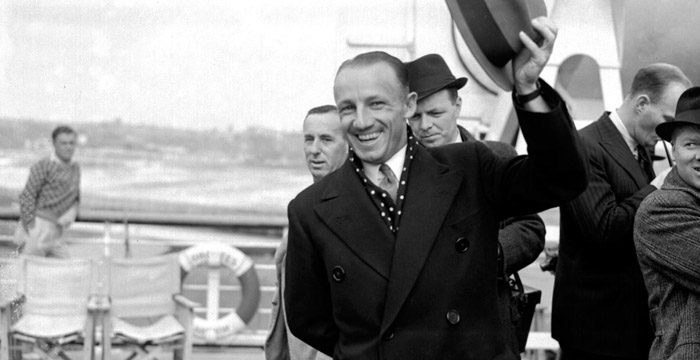The Untold Thunderstorm of Don Bradman

Cricket is a game of records — some get broken, and a few become immortal. One such jaw-dropping moment in the sport’s history came in 1931, when Sir Donald Bradman, the greatest batsman of all time, scored a century in just 3 overs.
Sounds unbelievable? Let’s break down this stunning story that feels more like a legend.
What Exactly Happened?
A Practice Match Turns into Cricketing Folklore
On November 2, 1931, in Blackheath, New South Wales, Don Bradman walked onto the field to play a charity exhibition match. The opposition was far from weak, and the event was organized to raise money during the Great Depression. Nobody knew this match would give birth to one of the wildest batting feats ever recorded.
Match Format and Context
- Type: Timed exhibition game (not official first-class or international)
- Teams: Blackheath XI vs Lithgow XI
- Venue: Blackheath Cricket Ground, NSW, Australia
- Rules: 8-ball overs were used (as was the format in Australia back then)
This wasn't an international match, but the impact of what happened during these few overs still shakes the cricketing world.
The Explosion: Bradman's 100 in Just 18 Balls
Here’s what the scoreboard read after just 3 eight-ball overs:
- First Over: 33 runs
- Second Over: 40 runs
- Third Over: 27 runs
- Total: 100 runs off just 18 legal deliveries
Bradman went into beast mode, especially during the second over where he hit 6 sixes, reportedly all in a row. It’s believed the bowler Horrie Baker and the Lithgow team simply didn’t know what hit them.
This was not slogging — this was pure Bradman genius: timing, placement, and power. He showed the world how a hundred could be scored faster than anyone ever imagined.
How Rare is This Feat?
Let’s put it in perspective:
| Player | Runs Scored | Balls Faced | Overs | Context |
| Don Bradman | 100 | 18 (8-ball overs) | 3 | Exhibition Match, 1931 |
| Chris Gayle (Fastest T20 100) | 100 | 30 | ~5 overs | IPL 2013 |
| AB de Villiers (Fastest ODI 100) | 100 | 31 | ~5.1 overs | 2015 |
Bradman's hundred wasn't in an official match, but no one has ever done it faster in any form of cricket.
Did This Really Happen?

Critics vs Records
Some critics question whether this really happened the way it’s told. Since it wasn’t an international match, there are no official ball-by-ball recordings. However, multiple eyewitness accounts and publications (including Wisden references) affirm it.
Even Sir Bradman himself spoke about this in later interviews, recalling it as one of his most exhilarating moments with the bat.
Why It Still Matters Today?
- It proves that greatness is not always limited to international stats
- It shows how one player can redefine what’s possible in sport
- It continues to inspire cricketers and fans 90+ years later
Whether you believe it 100% or not, Bradman’s 3-over century will forever remain a symbol of cricket’s magical unpredictability.
Final Thought: Can This Ever Be Broken?
With modern cricket formats (T20, The Hundred, T10), scoring rates are higher than ever, but 3 overs = just 18 balls (or 24 in modern 6-ball overs).
Even with fielding restrictions and power plays, hitting 100 off 18 legal balls requires:
- 17 sixes + 1 four or
- 16 sixes + 4 runs in extras
Unless someone has a Bradman-like day and faces all balls in 3 overs with a perfect strike rate, this record is virtually unbreakable.
FAQs
- Was Don Bradman’s 3-over century in an international match?
No. It happened in a charity exhibition match in 1931 at Blackheath, not recorded as first-class or international. - How many balls did Bradman face for his century?
Just 18 balls, spread over 3 overs of 8 balls each. - Is this officially recorded by the ICC or Wisden?
While it's not part of official ICC statistics, it is widely documented by ESPNcricinfo, Wisden archives, and verified news sources.
Post Comment
Be the first to post comment!